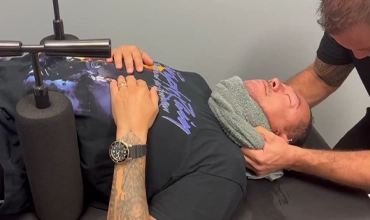CHIROPRACTOR Wellington FL

Wellington FL chiropractor Dr. Travis Lamperski at Palm Beach Chiropractic & Rehabilitation, specializes in Spinal Decompression. Dr. Travis Lamperski is certified in the Ring Dinger® technique which is highly recognized worldwide for the unique and effective way to decompress the spine. This office also has state-of-the-art, SpineMed Decompression and the Summas Laser to treat injuries of the spine and extremities. We want you back to living your best life quickly and pain-free through non invasive chiropractic care. We welcome all Florida residents to benefit from Dr. Travis Lamperski's knowledge and mastery skill set, from our neighbors in Lake Worth, Wellington, Lantana, Greenacres, West Palm Beach, Atlantis, and Boynton Beach to Miami, Tampa, Orlando, Naples, Jacksonville and all places in between. We are excited to offer the Ring Dinger® and his chiropractic expertise to all Florida residents, snowbirds, and out-of-state vacationers!
WELCOME TO
Palm Beach Chiropractic & Rehabilitation
WE ARE RING DINGER® CERTIFIED
The Ring Dinger® is recognized worldwide for the unique and effective way to decompress the spine. First and foremost, Dr. Travis Lamperski conducts a thorough medical history and orthopedic & neurological examination on every patient. He must determine if they are a candidate for this procedure to ensure it will be safe and effective. During the Ring Dinger®, the patient lies on their back with their legs elevated and hips secured to a custom table. Dr. Lamperski then uses a towel to apply controlled pressure in one smooth motion to manually decompress the entire spine. After the full spinal decompression on the Y-Axis, he performs more adjustments to the neck and spine. The Ring Dinger® is just one adjustment that fits into the entire Johnson BioPhysics™ adjustment technique that manipulates all vertebrae and extremities and adjusts along the X, Y & Z axis.
Why Choose Palm Beach Chiropractic & Rehabilitation?
- Conveniently located for people in 33449, 33467, 33463, 33414
- The highest rated chiropractor in Wellington FL
- Affordable pricing
- Successfully treated thousands of local patients
- Se hablas español
How Can Chiropractic Care Help You?
Many people dismiss chiropractic as being something only for back pain, but chiropractic treatment can be used to relieve a wide variety of physical issues, such as migraines and headaches, chronic pain, carpal tunnel, pain due to injury or muscle strain, and much more. Call us if you need:
- Back Pain Relief
- Sciatica Treatment
- Spinal Decompression
- Neck Pain Relief
- Herniated Disc Pain Relief
- Lower Back Pain Relief
- Shoulder Pain Relief
- Laser Therapy






